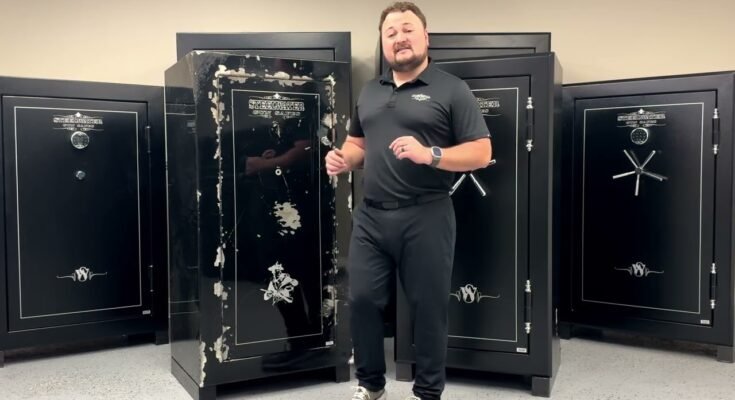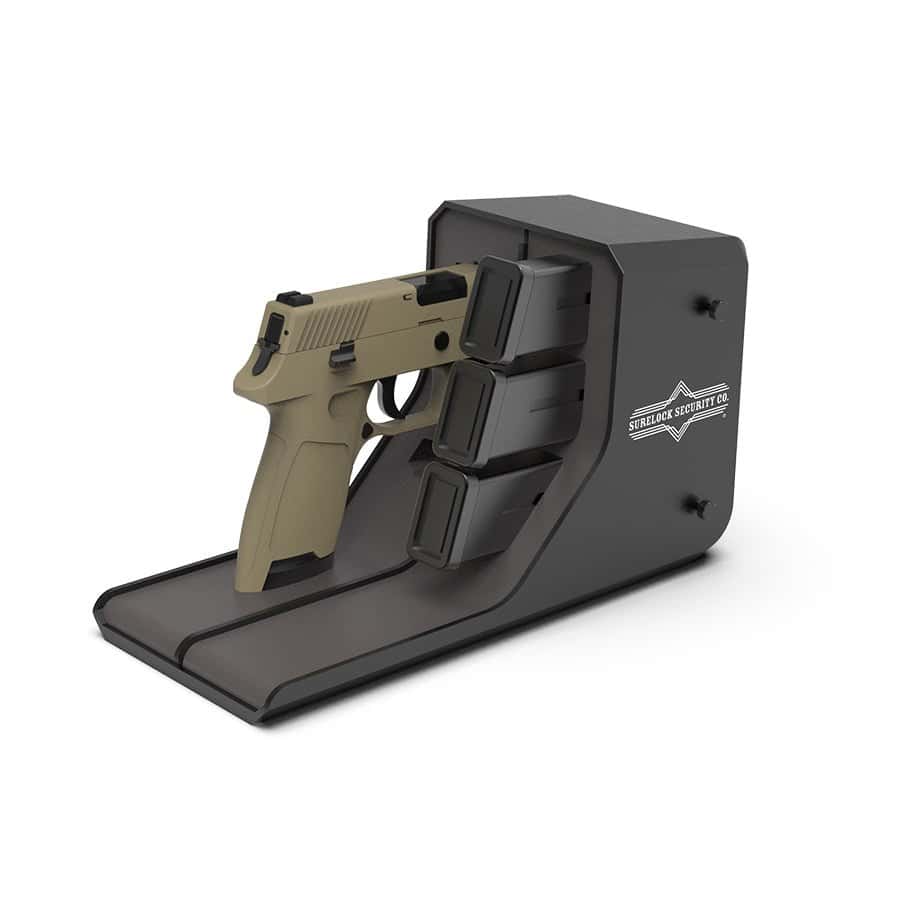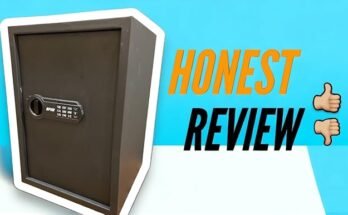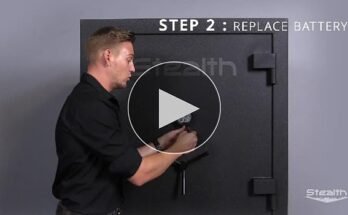I’ve serviced and set up many home and commercial safes over the years, including Steelwater models with both electronic and mechanical locks. If you want to change your safe code without stress, you’re in the right place. Here’s a clear, safe way to change the combination on a Steelwater gun safe, with practical tips I use in the field. This walkthrough keeps the door open while you program, helps you pick the right steps for your lock type, and shows you how to test the new code. You’ll learn exactly how to change the combination on a Steelwater gun safe the smart way.

Source: steelwatergunsafes.com
Before You Start: Tools, Safety, And Setup
Changing a safe code is simple when you prepare well. Small mistakes can lock you out. A few minutes of prep can save hours later.
Follow these pre-checks:
- Keep the safe door open and extend the locking bolts, so a bad code won’t trap the door shut.
- Replace or test batteries first. Weak batteries cause failed programming. Most Steelwater electronic locks use a 9V alkaline battery under the keypad.
- Have your current code ready. You need it to change to a new one.
- Pick a new code you can remember but others can’t guess. Avoid repeats, birthdates, or 1234.
- Have the owner’s manual handy. Models differ slightly, especially for electronic locks.
- Work in a quiet spot. Beeps and light cues matter.
From experience, the most common mistake I see is shutting the door before testing the new code at least three times. Keep it open until you are sure the new combination works.

Source: www.amazon.com
Identify Your Steelwater Lock Type
Steelwater gun safes ship with two common lock types:
- Electronic keypad lock. Most newer models use a UL-listed SecuRam electronic lock. Some older units may use LaGard electronic locks. The steps are similar, but button names can vary by model.
- Mechanical dial lock. These use a three-number mechanical combination dial with a change key.
How to tell which you have:
- Keypad with beeps and a battery under or behind it means electronic.
- Numbered spin dial with no electronics means mechanical.
If you are unsure, check the manual, the label near the hinge, or contact Steelwater support with your model number. This helps you follow the right procedure below.

Source: www.amazon.com
Change The Code On A Steelwater Electronic Lock
Most Steelwater electronic locks follow a simple pattern: enter current code, enter a programming command, then enter the new code twice. Your keypad may beep and flash to confirm. Keep the door open while you do this.
General steps for common SecuRam-style keypads:
- Enter your current code. Wait for the confirmation beep or green light.
- Press the program key if present. On many SecuRam keypads, this is the 0 key held for a few seconds, or a separate P button. Listen for a long beep.
- Enter your new 6-digit code. Choose a code you can recall easily.
- Re-enter the new 6-digit code to confirm. You should hear a success beep or see a green light.
- Test the new code 3 to 5 times with the door open. Turn the handle to retract and extend the bolts after each test.
If your keypad has a different flow, try this alternate sequence used on some models:
- Enter current code.
- Press 7, then press the program key.
- Enter new code.
- Enter new code again to confirm.
Practical notes from the field:
- Use a fresh, name-brand 9V alkaline battery. Rechargeables can cause low-voltage errors.
- If you get rapid error beeps, stop. Wait 30 seconds and try again from the start.
- Some locks have a lockout delay after several wrong entries. Wait for the timeout, then retry.
Record your new code in a safe place, not in your phone contacts under “safe.” Use a neutral label only you understand.

Source: www.amazon.com
Change The Combination On A Steelwater Mechanical Dial
Mechanical locks need a change key and the door open. The change key goes through the small hole on the inside of the door to reach the lock body. Always follow the exact dialing sequence. Go slow. If you miss a number, start over.
What you need:
- Your current three-number combination.
- A correct change key for your lock model.
- Good lighting and a calm pace.
Typical process used by many LaGard-style Group II locks:
- Open the door. Extend the bolts so the safe cannot close by accident.
- Remove the inside door panel if needed to access the lock body. Find the small change key hole in the lock case.
- Dial the current combination to the opening position. Keep the dial steady.
- Insert the change key into the back of the lock and turn it 90 degrees as instructed by your manual.
- Dial the new combination using the exact turns and stopping points. Most sequences use:
- Turn the dial left (counterclockwise) three times to the first number.
- Turn right two times to the second number.
- Turn left one time to the third number.
- Turn the change key back to its original position and remove it.
- Dial the new combination to open. Test it at least three times with the door open.
- Reinstall the door panel carefully.
Important tips I give clients:
- Never guess the dialing pattern. Your manual defines left/right turns and passes. A single extra turn can set the wrong combo.
- Do not force the change key. If it doesn’t seat, the wheel pack is not aligned.
- If the dial feels rough or inconsistent, stop and call a pro. Forcing it can damage the lock.

Source: www.amazon.com
Test, Troubleshoot, And Recover
Testing prevents lockouts. I run this checklist on every job:
- Test the new code three to five times with the door open.
- Cycle the bolts each time. Feel for smooth movement.
- Wait a minute and test again. Some locks have time delays or relockers.
If something goes wrong on electronic locks:
- Replace the battery with a fresh alkaline 9V and retry.
- Re-enter the current code if the change failed. Start the programming steps again from the beginning.
- If you hit a lockout, wait for the timeout. Most locks reset after a few minutes.
- If the keypad is unresponsive, check the battery contacts. Lightly bend them for better contact if needed.
If something goes wrong on mechanical locks:
- Do not shut the door. Re-dial the old combination. If it opens, the change did not take.
- If the old code fails, try the new code again with perfect dialing. Listen and feel for the gate drops.
- If both fail, do not force the handle. Call a certified safe technician.
When to call Steelwater or a locksmith:
- If you lost both old and new codes.
- If the keypad shows error codes you cannot clear.
- If the dial will not accept the change key or feels gritty.
Pro Tips, Mistakes To Avoid, And Care
These small habits prevent big headaches:
- Keep the door open while programming. This is the number one rule.
- Change batteries once a year or at the first sign of weak beeps.
- Avoid easy patterns like 111111 or 123456. A simple passphrase number, like using the positions of a short word on a phone keypad, works well.
- Do not share your code by text or email. Share in person only when needed.
- If you travel, test your code when you get back. Humidity and battery drain can show up after long breaks.
- Store the backup combo in a sealed envelope in a separate, secure place.
Personal lesson learned: I once helped a client who changed their code with the door closed and a weak battery. The programming failed halfway, and the lock entered a delay. We spent hours resolving it. Since then, I always start with a fresh battery and the door open. It takes five minutes and saves everyone stress.
Maintenance And Security Best Practices
Good upkeep keeps your Steelwater safe reliable for years:
- Check and replace the 9V battery annually. Set a calendar reminder.
- Keep the keypad and dial clean and dry. Wipe with a soft cloth only.
- Do not slam the handle. Smooth operation protects the bolts and lock.
- If your safe is in a humid area, use a dehumidifier rod to protect the lock and contents.
- Review who knows the code every six months. Change it if anyone with access no longer needs it.
- If your model supports it, enable features like time delay or dual code for added security.
For business use or shared homes, document who can change combinations and when. A simple log goes a long way for accountability.
Frequently Asked Questions Of How To Change The Combination On A Steelwater Gun Safe?
Can I change the code on my Steelwater safe without the current code?
No. For security, you need the current code to program a new one. If it’s lost, contact Steelwater support or a certified locksmith for verified recovery options.
What battery should I use for the electronic lock?
Use a fresh, name-brand 9V alkaline battery. Avoid rechargeable or bargain batteries. Stable voltage matters during programming.
Why does my keypad beep but not open after changing the code?
The change may not have saved, or the battery is weak. Replace the battery, wait 30 seconds, and try the old code. If the old code works, repeat the programming steps carefully.
How often should I change my safe combination?
For home use, every 6 to 12 months is common, or any time access changes. For shared or business use, change it at staff changes or quarterly.
Do Steelwater mechanical locks need a special tool to change the combo?
Yes. You need the correct change key for the lock model, and you must follow the exact dialing sequence. If you are unsure, call a professional.
What if my safe enters a time delay or lockout?
Wait for the delay to end. Do not keep entering codes. After the timeout, use the correct code once. If the delay repeats, check the manual or call support.
Is there a factory reset for Steelwater electronic locks?
There is no public master reset for security reasons. Verified service technicians and the manufacturer can assist after ownership verification.
Wrap-Up And Next Steps
You can change the combination on a Steelwater gun safe with confidence when you match the steps to your lock type, keep the door open, and test the new code several times. A fresh battery, slow and steady inputs, and clean dialing make all the difference. Take 10 minutes today to update your code and document it safely. You will be glad you did.
Want more security tips and maintenance guides? Subscribe, leave a comment with your model and questions, or explore our other safe care articles below.
Watch This Video on How to change the combination on a Steelwater gun safe?



